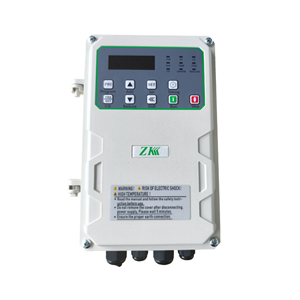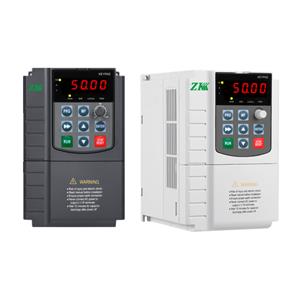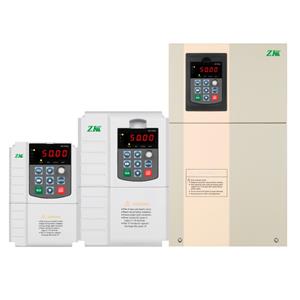Analysis of the Global Photovoltaic Market Status in 2025 and Outlook for 2030
According to InfoLink statistics, global photovoltaic installed capacity is expected to reach approximately 486 GWac in 2024. Based on the capacity allocation of projects in different regions, global demand for photovoltaic modules will reach approximately 584 GWdc, a 26% year-on-year increase from 2023. However, compared with the annual growth rate of over 60% from 2022 to 2023, the market's growth momentum has significantly weakened.
First, let's look at the market performance of individual regions. In 2024, the Asia-Pacific region will see approximately 333 GWac of new installed capacity and 391 GWdc of module demand, a 41% increase from 2023, accounting for 67% of the global market share. In 2025, the region is projected to have approximately 315-355 GWac of new installed capacity, corresponding to approximately 367-410 GWdc of module demand. This represents a year-on-year growth rate between a 6% decrease and a 5% increase, and its global market share will decline slightly to 63%.
Asia-Pacific Region
As shown in Figure 2, the top five PV markets in the Asia-Pacific region in 2025 will be China, India, Pakistan, Australia, and Japan, with China accounting for approximately 75% of Asia-Pacific market demand. The Asia-Pacific region's global market share will decline slightly in 2025, primarily due to market fluctuations in China. Driven by the "430" and "531" policies and the conservative atmosphere in the final year of the 14th Five-Year Plan, China's annual new installed capacity is expected to decline to 255-275 GWac, corresponding to module demand of 290-310 GWdc.
India, the second-largest market, is expected to see new installed capacity increase to 30-37 GWac in 2025, with module demand of 37-46 GWdc, driven by government project bidding and subsidy programs (most policy milestones are 2026), coupled with domestic module production capacity expansion targets.
Europe
In 2024, Europe will see new installed capacity of 72 GWac and module demand of 80 GWdc, a year-on-year increase of 2%, accounting for 14% of the global total. In 2025, new installed capacity is expected to reach 75-88 GWac, with module demand of 84-98 GWdc, a year-on-year increase of 5%-22%, increasing its share to 15%.
Germany, Spain, Italy, France, and Poland are the top five European markets, with Germany accounting for 23% of European demand. Despite facing a fiscal deficit and a change in chancellor (whose incoming chancellor is conservative about renewable energy), Germany announced a €100 billion investment to promote climate change, projecting 18.5-20.5 GWac of new capacity and 20-23 GWdc of module demand.
Although other European countries are constrained by grid capacity constraints, negative electricity prices, and project delays, they are actively addressing challenges to achieve their 2030 installation targets, and demand is expected to grow steadily.
Americas
In 2024, the Americas will see 61 GWac of new capacity installed and 71 GWdc of module demand, a 7% year-on-year decrease, accounting for 12% of the global total. In 2025, new capacity is expected to reach 53-70 GWac, with 69-83 GWdc of module demand, representing a 3% year-on-year decrease and a 16% increase, accounting for 13% of the global total.
The United States, Brazil, Mexico, Chile, and Colombia are the top five markets, with the United States accounting for 60% of Americas demand. Due to the Trump administration's tariff policies, energy policy uncertainty, and new tariffs on four Southeast Asian countries, rising installation costs in the United States may constrain demand. New installations are expected to reach 30-41 GWac, with module demand expected to reach 42-49 GWdc.
In Brazil, demand is under pressure due to high interest rates (reaching 14.25% in March 2025), financing difficulties, and the removal of the 25% import tariff starting in July. New installations are expected to decline to 12.5-15 GWac, with module demand expected to reach 14.5-16.5 GWdc.
Middle East
In 2024, the Middle East will see 14 GWac of new installations and 34 GWdc of module demand, representing a year-on-year increase of 56%, accounting for 6% of the global total. In 2025, new installations are expected to reach 17-25 GWac, with module demand reaching 38-46 GWdc, a year-on-year increase of 9%-33%, increasing the region's share to 7%.
Saudi Arabia, Turkey, the UAE, Oman, and Israel ranked in the top five, with Saudi Arabia accounting for 46% of Middle Eastern demand. Saudi Arabia is driving market growth through large-scale project partnerships, with an estimated 4-7 GWac of new installed capacity and 18-21 GWdc of module demand.
Turkey, benefiting from government subsidies, accelerated approvals, and planned growth, is expected to add 5-6 GWac of new installed capacity and 6-7 GWdc of module demand.
Africa
In 2024, Africa is projected to add 6 GWac of new installed capacity and 7 GWdc of module demand, representing an 11% year-on-year increase, accounting for 1% of global demand. In 2025, it is expected to add 7-12 GWac of new installed capacity and 8-14 GWdc of module demand, representing a 17%-95% year-on-year increase, increasing its share to 2%.
South Africa, Morocco, Egypt, Tunisia, and Nigeria are the top five markets, with South Africa accounting for 20% of African demand. Despite grid and infrastructure challenges, South Africa's net metering compensation framework, adopted by the end of 2024, is expected to stimulate demand for distributed PV, with an estimated 1.5-2.5 GWac of new installed capacity and 1.6-2.8 GWdc of module demand.
Morocco is attracting foreign investment through large-scale tenders and investment environment reforms, leading to growing demand for centralized projects. The country is expected to see 1.2-2 GWac of new installed capacity and 1.4-2.4 GWdc of module demand.
Based on current forecasts, global new PV capacity is expected to be between 466-549 GWac in 2025, corresponding to module demand of 566-650 GWdc. Scenario analysis:
Neutral scenario: Market demand is expected to decline by approximately 3% compared to 2024;
Optimistic scenario: Growth rates of up to 11% are possible, with an average growth rate of approximately 4%.
Although the module market will enter a mature phase and growth will slow starting in 2025, overall demand is expected to maintain steady growth, benefiting from the accelerated deployment of renewable energy and the pursuit of net-zero carbon emissions targets in most countries around the world. By 2030, global new installed capacity is expected to reach 655-763 GWac, and module demand is expected to rise to 758-895 GWdc, becoming a core driver of global energy transformation and climate change mitigation.




